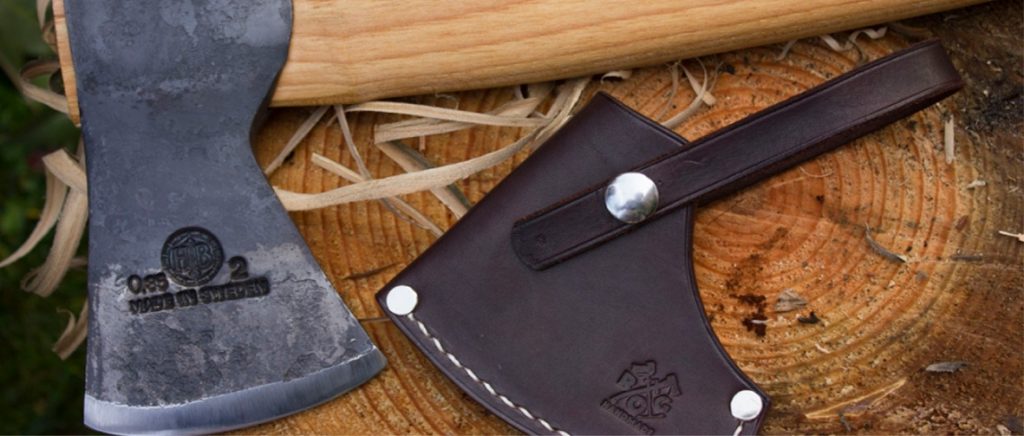
The Hults Bruk axe and hatchet line is classic, truly classic. The company– with a history dating back to 1697 — has outlived countries and empires, seen the rise of the steam engine and electricity, and survived the power struggles of a world becoming ever more connected. Through this long history Hults Bruk has incorporated new technology while managing to maintain a traditional quality-first mindset. First established to make nails, iron bars and other construction implements, the water-powered production plant later made anchor chains and forgings for shipyards along with a variety of industrial and household goods. Through their first century of business, their production focused primarily on nails. Keep in mind, ships were still built from wood at this time, so nails and other durable fasteners like iron pins were in high demand.
The 1730’s saw a sale of the company to widow Brigitta Wallrave von Berchner, which marked the beginning of major expansions to the original property. Her death in 1745 meant the business went to her granddaughter, and a series of sales traded ownership around until the 1820’s when Magnus Ekelund purchased it and set it on a new course, one that would see the company passed down through three generations. The first major technological jump was made when the Ekelunds switched from forging metals to a true foundry. Now accurate blanks could be poured and then further forged into a final product. Modernization had begun.
The forge allowed them to branch into agricultural machinery and railway parts, a good thing too, since stiff competition manufacturing nails and chains forced them out of production. Finally, in the late 1800’s and with profits dwindling, a decision was made to specialize…in axes. Hand tools like axes and spades had been forged at Hults Bruk since the beginning, but never on a large scale. In those days and until the early 1920’s axe heads were forged from iron and a high quality steel edge was later baked in. Gunnar Ekelund — grandson of Magnus and now 3rd generation owner — traveled to the US on a mission to study industrial methods and further refine the production process. He purchased several machines in the US and England and the newly streamlined methods allowed axe production to boom, outpacing all their other goods.
The newly improved and now state-of-the-art production capacity at their original ironworks site outside of Norrkoping allowed Hults Bruk to create an international market, and they quickly capitalized on a high demand for quality tools in and outside of Europe. Their planned export markets at the time were mainly Australia and New Zealand, but a consequence of Gunnar’s trip to America was new demand from the vast reaches of American timberland. Hults Bruk’s first axe shipments to America started in the 1880’s but ended before the turn of the century.

After electrification in the mid-1910’s various modernizations were tried, but hand forged axes were still noticeably higher quality, so the tradition continued. Finally in the 30’s heat treating was introduced to maintain sharpness and combined with a now-solid high quality steel axe head to complete the evolution of design. The axes purchased today are made a in a very similar fashion to those manufactured nearly a century ago.
The Hultafors Group purchased Hults Bruk in 1992 and still owns it today. Now part of the global marketplace, you can purchase a Hults Bruk axe pretty much anywhere in the world, but unsurprisingly their major business comes from Europe, New Zealand, Australia and Canada. It wasn’t until 2015 that they started up sales in the US again with a specific line of axes for the American market. We carry several Hults Bruk models and each one is designed with a specific job in mind like carpentry, cutting kindling, felling trees, and splitting logs. They even have a model specifically designed for hatchet throwing. The curved hickory handles are treated with linseed oil for a durable natural protective layer and the axe heads are sand blasted before a clear lacquer is applied for longevity. Check them out! A simple tool is a true pleasure, one with a little history behind it is even better.

